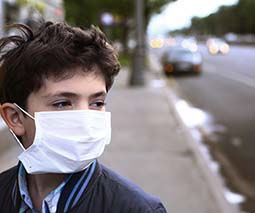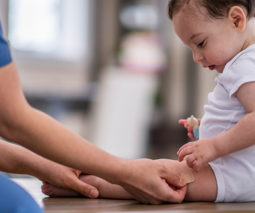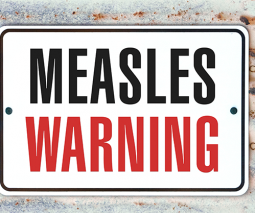Everything you need to know about herd immunity and vaccination

Herd immunity. You’ve probably heard of it and have some idea that it’s connected to vaccination, and it’s important in keeping a community safe and healthy. But how does it actually work? And how does it affect you and your family?
What is herd immunity?
Herd immunity refers to the tipping point when enough people within a community are immune to a particular disease so that it makes it harder for the disease to spread. People might be immune because they have already survived the disease and developed immunity, or – more commonly – because they have been vaccinated.
What percentage of the community needs to be vaccinated to achieve herd immunity?
Studies into many vaccine-preventable diseases (including, among others, whooping cough, smallpox, influenza, pneumococcal diseases and rotavirus) have shown that there is some positive effect for the whole community once just 50 per cent of a community is vaccinated.
But really, it depends on how contagious a disease is. The more contagious the disease, the higher the level of herd immunity needs to be to stop it getting a foothold in the community.
Measles, for instance, is highly contagious, and requires a community vaccination rate of approximately 95 per cent to achieve herd immunity.
There is a risk that when herd immunity has historically been high in a community, people stop seeing the need for vaccination. Vaccines may have been so effective in preventing disease outbreaks that individuals have never come in contact with the disease, either themselves or among their acquaintances, and wrongly assume that there is no risk and therefore no need to vaccinate.
Over time, as people choose not to vaccinate, it lowers a community’s immunity to levels at which outbreaks of disease can occur, as has happened with measles overseas in the last few years. You can check the vaccination rate in your local community by postcode to see how it stacks up.
If herd immunity works so well, why does my child need to be vaccinated at all?
Herd immunity slows down the spread of disease and lowers the chance of a vulnerable person catching it. For example, generally, the younger the child, the greater the chance of more severe disease if they do catch it. However it’s not a complete guarantee of safety from the disease.
Herd immunity won’t necessarily stop individuals from contracting a disease they aren’t immune to – but it will lower the chances, and can stop the kind of mass outbreaks of disease that can rapidly spread through a community.
The best protection for an individual from common vaccine-preventable illnesses is to be vaccinated themselves. Herd immunity is really a second line of defence, stopping diseases from spreading as quickly, or to as many other people as they might otherwise.
Can herd immunity protect people from all diseases?
Unfortunately, no. It only protects people from contagious diseases – those that are spread from person to person. It doesn’t work for a disease like tetanus, which you catch by coming into contact with bacteria living in soil or manure. The only prevention for diseases like tetanus is vaccination.
But most vaccine-preventable diseases are contagious, and over time, high levels of herd immunity will help to wipe them out, as it did with smallpox in 1980.
When herd immunity works: The eradication of smallpox
Contagious diseases need a host. If no host is available, those diseases will cease to exist naturally. The best example of this process in action is smallpox, which was once so widespread that millions of people died from it every year. Due to a sustained campaign for smallpox vaccination across the world, the last known case of smallpox was diagnosed in 1977 and the disease was officially declared eradicated by the World Health Organisation in 1980.
How does herd immunity affect the vulnerable people in the community?
Herd immunity is most vital for vulnerable people, such as those who can’t be vaccinated. They might be children who are too young to be fully vaccinated or people with compromised immune systems (for instance, those with some chronic illnesses, people undergoing chemotherapy and so on).
They are often at higher risk of serious disease if they get an infection, but they rely on herd immunity being high enough that they don’t come into contact with the disease.
If you don’t catch it, then you can’t spread it
Even if you believe that some so-called “childhood diseases” aren’t that serious and you or your child could fight them off without the help of immunisation, there are people in every community who aren’t so fortunate. They are the ones most at risk when herd immunity is low. The contagious period for many vaccine preventable diseases often begins well before you even know you are sick – at a time when you are out and about allowing it to spread through a community. Also, some people who are otherwise well can sometimes have severe complications from vaccine preventable diseases.
High levels of herd immunity mean less people will catch a disease. And if less people catch it, then less people can spread it.
What can I do to look after my community?
Vaccinate yourself and your family. Visit your doctor or child health nurse and make sure you and your children’s vaccinations are up to date. The Australian government makes the standard vaccination schedule available to all children free of charge up to the age of 19 years, and keeps records of where children are up to in their schedule through the Australian Immunisation Register.
(This is a sponsored post for the Australian Government Department of Health. The Australian Government’s Get the facts about immunisation campaign has been developed to give you the facts about immunisation so that you can make informed decisions in the best interests of your child and our community. Click here to get the facts about immunisation.)









